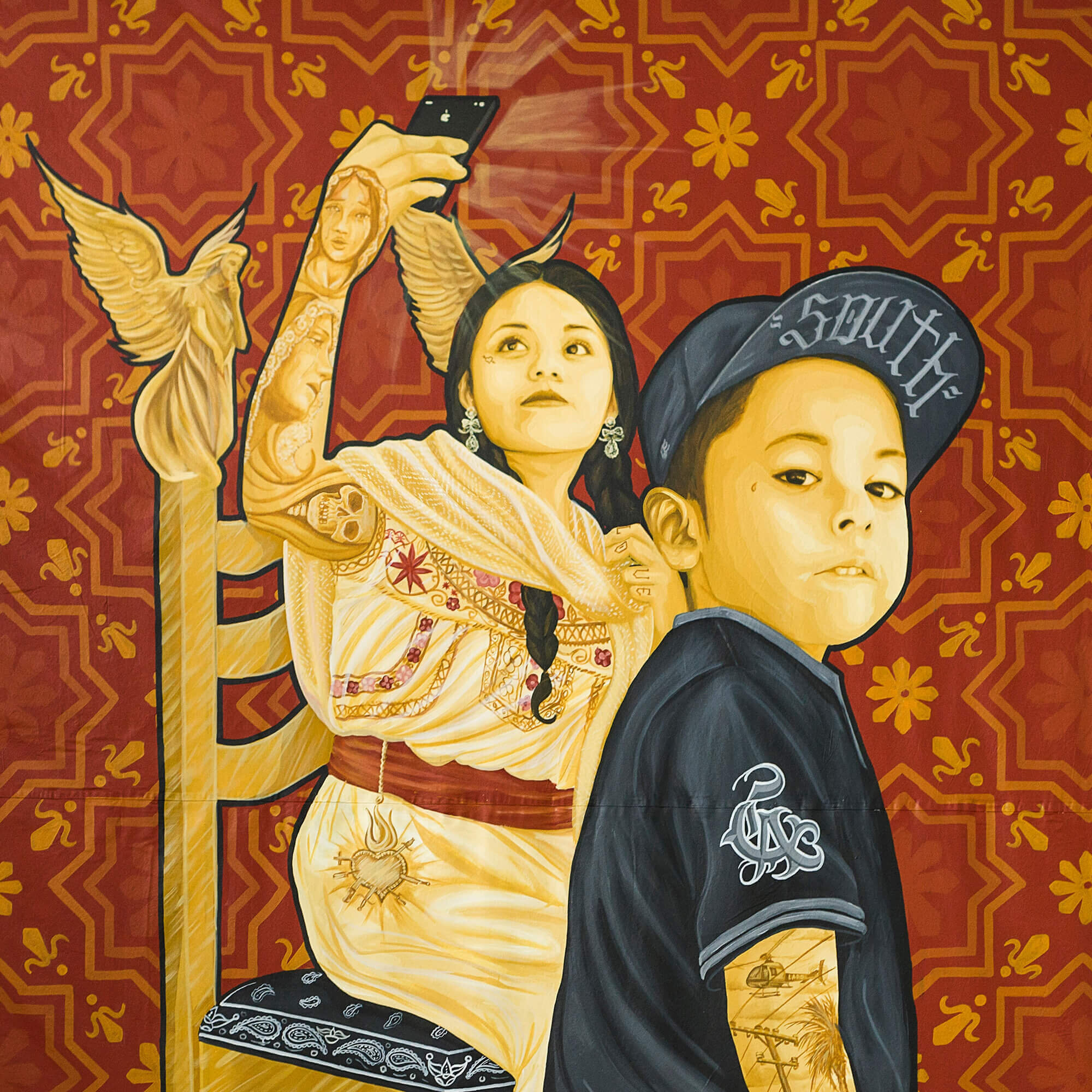OAXACALIFORNIA: THROUGH THE EXPERIENCE OF THE DUO TLACOLULOKOS
Hello Readers!
OAXACALIFORNIA: THROUGH THE EXPERIENCE OF THE DUO TLACOLULOKOS
I selected the exhibit OAXACALIFORNIA: THROUGH THE EXPERIENCE OF THE DUO TLACOLULOKOS by artists Dario Canul y Cosijoesa Cernas. It is a beautiful and moving exhibit created by Mexicans and their experiences in California. The name combines Oaxaca and California and that is exactly what the exhibit does, it is a fusion of Californian and Oaxacan culture. The exhibit consists of the paintings Wherever You May Go, And That Is How They Hid The Sun, The Angels Sing Their Praise to God, And In Memory of the Forgotten, Smile now, Cry later, Remember that the World os Mine,and The Size of Your Suffering. The paintings creatively use religion, family, and cultural pride to unify Mexican-Americans. When“The artist defined the tear as the representation of the difficulties faced my migrant children”(Smile now, Cry later 0:30-0:59) it brought together a whole community. Many Mexican-Americans in this country are first or second generation and know the struggle of feeling different.
This is stop 3 And That Is How They Hid the Sun
https://molaa.org/oaxacalifornia-stop-3
“From the Barrio to the Barricades: "Grafiteros", Punks, and the Remapping of Urban Space”
The JSTOR article I chose is “From the Barrio to the Barricades: "Grafiteros", Punks, and the Remapping of Urban Space” by Maurice Rafael Magaña. This article explains the injustice that are going on in Oaxaca. They are experiencing police brutality, violent protests and riots, and are fighting for anti-authoritarian sentiment that is happening there in Oaxaca. One paragraph explains “the federal police brutally retook physical control of the city, youth from the social movement held a series of meetings to discuss how best to keep alive the hope and momentum”(Magaña 170). The police are brutalizing these young kids fighting for their freedoms. All they want to achieve is an anti-authoritarian state.

This is stop 6 Smile now, Cry later
https://molaa.org/oaxacalifornia-stop-6
What's the connection?
The article and the art work are reflections of each other. In stop three of OAXACALIFORNIA: THROUGH THE EXPERIENCE OF THE DUO TLACOLULOKOS there is a painting that speaks to the police brutality that latinos specifically Mexicans experience in America today. The article speaks about the Mexicans in Oaxaca who are facing police brutality there in Mexico. The art not only portrays the experience of Mexican-Americasn living in America but Mexican natives and their experiences in Mexico. This connects with my theme of technology and invention in the creation of art by looking at these images and the stories they tell. Of specific objects that are shaping the Mexican American community.
This is stop 4 The Angels Sing Their Praise to God
https://molaa.org/oaxacalifornia-stop-4
Work Cited
Cernas, C., & Canul, D. (2020, March 1). Oaxacalifornia: Through the experience of the duo tlacolulokos - molaa: Museum of Latin American art. MOLAA. Retrieved December 10, 2021, from https://molaa.org/oaxacalifornia.
The Museum of , L. A. A. (Ed.). (2020, May 6). OaxaCAlifornia - Virtual Tour (No Audio) | Museum of Latin American Art (MOLAA). Youtube. Retrieved December 10, 2021, from https://www.youtube.com/watch?v=iQXJhcfCziA&t=30s.

Comments
Post a Comment